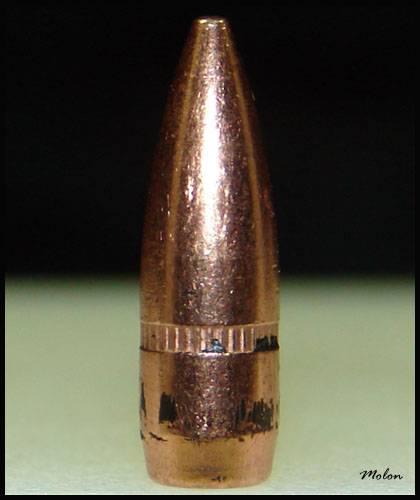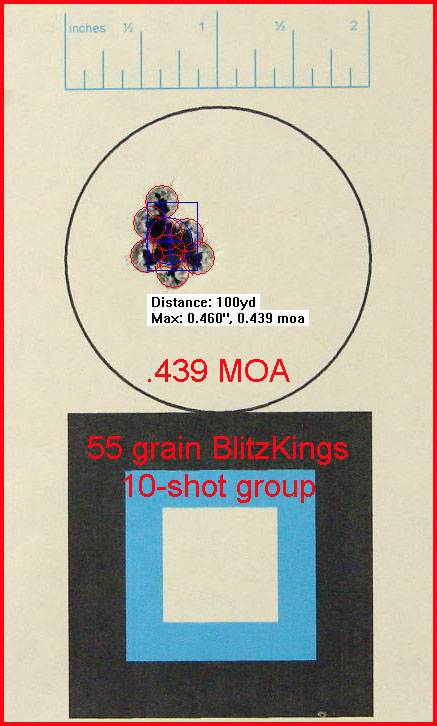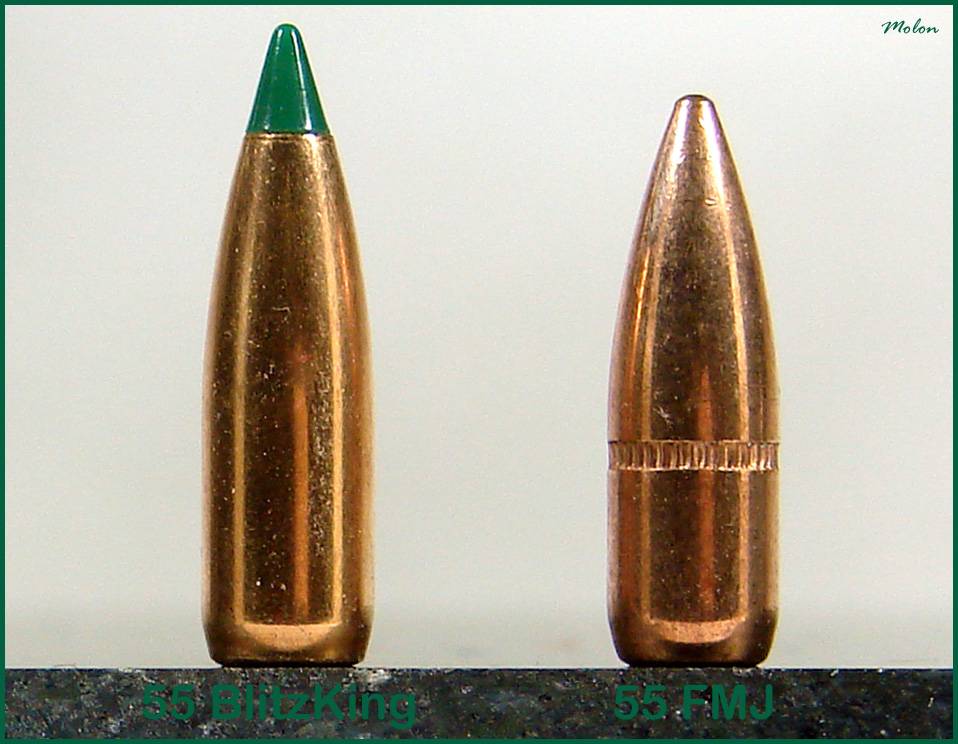Getting an AR put together and wondering what ammo and barrel twist is best. Leaning towards 1000 rounds of some type of M193 ammo. Please advise.

Best AR twist and ammo (M193) for SHTF?
-

Glocktalk is a forum community dedicated to Glock enthusiasts. Come join the discussion about Glock pistols and rifles, optics, hunting, gunsmithing, styles, reviews, accessories, and more!
WEATHERBY460
81 - 100 of 167 Posts
Joined
·
16,794 Posts
We looked at in many ways. Follow my math. He signed at 17, so he has 1 year down now. After he graduates HS, he goes to AIT. Then he goes to College, on the NG dime. He got a big chunk as a signing bonus, will get another chunk when he graduates HS. He has college credit from BCT, will get some from AIT, and from AP and dual credit will have about 20 credits. So he starts college as a Sophomore. Graduates in 3 years, 4 years after signing and has 2 years left. Yes, he still has the drill 1 weekend a month.A better plan would be ROTC, combat arms O, then have the Army pay for law school.
So, at 21, he will have 2 years left and lots of choices. He has already been offered a SF slot with an invitation to Sniper School due to BCT performance. He is a 42A assigned to a JAG unit, so he will work in a JAG office. I have two clients that are attorneys, and former JAG lawyers, and they see it as a good path. Most think, based on what he has already done, getting the Army to pay for Law School will not be that hard.
If he did ROTC, he graduates at 21, goes to "Officers" Basis and then has 6 years on his contract. So free to decide the next step at 27, or 23. That is not insignificant and the NG bonuses were much higher.
Joined
·
16,794 Posts
I spent way too much time on the .224V. It is gone. Load up the 69s/77s to 5.56 pressures and 1200 is doable. I really was not seeing any real benefit of the 224V over the 5.56 loads. If I wanted to go further with a .22 caliber, I'd get a .223AI barrel.If you want to shoot farther with an AR, you can buy an upper in 6.5 Grendel or .224 Valkyrie, the latter will take you out to 1k.
Joined
·
3,269 Posts
Sounds solid.We looked at in many ways. Follow my math. He signed at 17, so he has 1 year down now. After he graduates HS, he goes to AIT. Then he goes to College, on the NG dime. He got a big chunk as a signing bonus, will get another chunk when he graduates HS. He has college credit from BCT, will get some from AIT, and from AP and dual credit will have about 20 credits. So he starts college as a Sophomore. Graduates in 3 years, 4 years after signing and has 2 years left. Yes, he still has the drill 1 weekend a month.
So, at 21, he will have 2 years left and lots of choices. He has already been offered a SF slot with an invitation to Sniper School due to BCT performance. He is a 42A assigned to a JAG unit, so he will work in a JAG office. I have two clients that are attorneys, and former JAG lawyers, and they see it as a good path. Most think, based on what he has already done, getting the Army to pay for Law School will not be that hard.
If he did ROTC, he graduates at 21, goes to "Officers" Basis and then has 6 years on his contract. So free to decide the next step at 27, or 23. That is not insignificant and the NG bonuses were much higher.
If he makes E5, he can still get into FLEP and have the Army pay for law school.
Joined
·
865 Posts
I think he was being g fasetiousYou are so full of Crap. You weren’t in the Corps. It’s people like you that gravy train off of real veterans. Stolen Valor.
at least I hope he was
Joined
·
7,778 Posts
Broke my Dad's heart when I didn't follow his footsteps into the military. He was a career man. By the time I turned 18 I honestly had enough of the military. Wanted to do college on my own. Took him awhile, but I made good, and he was proud of his son. That was quite important to me. I really miss the guy
Joined
·
14,539 Posts
I said 1/14 keyholed which is why they went to 1/12 which is what happened. and would happen with a 1/14 and 193
I have a Sako Vixen in .222 Remington with 1-14 twist and it will stabilize 55 grain bullets all day long. I've shot a couple barrels of groundhogs off my front porch from the front of my barn which is 380 yards away with it and I promise they fly straight and true.
The Air Force found they 1-14 wouldn't stabilize 55 grain bullets in an arctic test chamber below 32 degrees. But like everything in the military...it has to work under water, upside down, on the moon at the same time.
While 1-14 isn't optimal for 55 grains....lots and lots of people make it work fine with all kinds of .22 centerfires. Me included.
Joined
·
6,565 Posts
And it's good stuff! I've taken many deer with this load. Shoots tight groups from my 1:7 barrel.Heavier gold dots are basically unobtainium. 55gr is perfectly acceptable and is more available.
55 is the upper limit of 222 something tells me you have a better barrel than a m16a1I have a Sako Vixen in .222 Remington with 1-14 twist and it will stabilize 55 grain bullets all day long. I've shot a couple barrels of groundhogs off my front porch from the front of my barn which is 380 yards away with it and I promise they fly straight and true.
The Air Force found they 1-14 wouldn't stabilize 55 grain bullets in an arctic test chamber below 32 degrees. But like everything in the military...it has to work under water, upside down, on the moon at the same time.
While 1-14 isn't optimal for 55 grains....lots and lots of people make it work fine with all kinds of .22 centerfires. Me included.
No reason to complicate it i would go with the twist and chamber that shoots the widest range of ammunition.
Joined
·
2,924 Posts
1/9 is just like 5R rifling…..a marketing ploy to attempt to sell more rifles while not providing any advantage.
Joined
·
2,333 Posts
Huh??? So they only came out with 1/9 to sell more barrels??? 1/12 doesn’t stabilize 62 or higher consistently. 1/9 came out to be able to. Nothing to do with marketing. You came up with a new one though. I’d not heard that one before1/9 is just like 5R rifling…..a marketing ploy to attempt to sell more rifles while not providing any advantage.
Is 1:9 twist even manufactured anymore? I can't seem to find any AR's sold with a 1:9 barrel.
Plenty. The S&W Sport 2 is a common example.Is 1:9 twist even manufactured anymore? I can't seem to find any AR's sold with a 1:9 barrel.
Joined
·
2,333 Posts
They around. Nothing at all wrong with 1/9. I have a Wilson 1/9 twisted match barrel. It shoots an inch or better with 69gn FGMMIs 1:9 twist even manufactured anymore? I can't seem to find any AR's sold with a 1:9 barrel.
Joined
·
2,924 Posts
There’s a reason for that.Is 1:9 twist even manufactured anymore? I can't seem to find any AR's sold with a 1:9 barrel.
Joined
·
1,589 Posts
I took basic at Fort Jackson, SC in the fall of 1983. Like you, I had a M16A1 rifle and we were shooting M193 ball ammo. On qualification day, we were going after pop-up targets at distances of 25 to 400 yards. I’m not sure what the target distance was for our night-fire qual, but it was a blast watching the tracer rounds run to and hit the targets. There were a few times when basic was really stressful, but looking back on it, damn, those were good times...Folks, When I went to basic training in 1980 the standard issue rifle was the M16A1 with a 20" barrel and 1-12 twist. The standard issue round was M193 55 grain ball. Rifle qualification was held on a range with man sized pop-up targets out to 380 meters.
Typical Internet Commando BS on both points.1/9 is more accurate with 193 however 1/7 will fragment more.
55 Grain FMJ Ammunition Fired From AR-15s With 1:9” and 1:7” Twist Barrels
The Internet Commando: "55 grain FMJ bullets are unstable/overstabilized/less accurate/less lethal/more lethal when fired from an AR-15 with a 1:7” twist barrel."
Statements such as the one above always seem to be proclaimed by the Internet Commando, without posting any valid, statistically significant data to support that these effects occur, or that if they do occur, that they do so to any degree that has any significant effect on the accuracy/precision spectrum involved with AR-15s firing M193-type ammunition out to distances of 100 yards.
By definition, an “unstable” bullet will have a gyroscopic stability factor of less than 1.0 at the muzzle. A typical 55 grain FMJ bullet loaded in M193-type ammunition will have a gyroscopic stability factor of approximately 4.27 when fired from a 20” barrel with a 1:7” twist.
[CaptainObvious] 4.27 is not less than 1.0. [/CaptainObvious]
The following demonstration compares the results of firing four, 10-shot groups of the same lot of 55 grain Prvi Partizan M193 ammunition from two different AR-15 barrels; one barrel with a 1:9” twist, the other barrel with a 1:7” twist. When chronographed from a 20” Colt M16A2 barrel, the muzzle velocity of this lot of PPU M193 was 3219 FPS with a standard deviation of 35 FPS.
The accuracy specification for M193 cited in MIL-C-9963F is as follows:
The average of the mean radii of all targets of the sample cartridges, fired at 200 yards, shall not exceed 2.0 inches.
These averages are from 10-shot groups fired from machine rested, bolt-actioned test barrels. All things being equal (which of course they seldom are) this specification equates to a mean radius of 1 inch at 100 yards.


The first barrel used in testing was a 16” Colt HBAR with chrome-lining, a NATO chamber and a 1:9” twist. This is the barrel found on the Colt 6721. All of my free-floated Colt 6721 barrels have turned in sub-MOA 10-shot groups at 100 yards when using match-grade hand-loads.
The second barrel used in testing was a 20” Colt HBAR, also with chrome-lining, a NATO chamber and of course a 1:7” twist. I've owned three of these barrels and they have all turned in 10-shot groups at 100 yards that hover just above one MOA when free-floated and shooting match grade handloads. I purposely selected the shorter barrel with a 1:9" twist and the longer barrel with the 1:7" twist in order to exacerbate any possible statistically significant influence that the differing twist rates and intendent muzzle velocities might have on the precision of M193-type ammunition when fired at a distance of 100 yards.
Colt 16” HBAR

Colt 20” HBAR

Accuracy (technically, precision) testing was conducted from a distance of 100 yards following my usual protocol. The barrels were free-floated during testing. The fore-ends of the weapons rested in a Sinclair Windage Benchrest and the butt-stock rode in a Protektor rear-bag. Sighting was accomplished via a Leupold VARI-X III set at 25X magnification and adjusted to be parallax-free at 100 yards. A mirage shade was used. The wind conditions on the range were continuously monitored using a Wind Probe. The set-up was very similar to that pictured below.

The Wind Probe . . .

Four 10-shot groups of the PPU M193 were fired from the 1:9” twist barrel. Those groups were over-layed on each other using RSI Shooting Lab to form a 40-shot composite group. The mean radius of that composite group was 1.08”.
As with the 1:9” twist, four 10-shot groups were fired from the 1:7” twist barrel. Those groups were also over-layed on each other to form a 40-shot composite group; the results were nearly identical to those obtained from the 1:9” twist barrel. The composite group had a mean radius of 1.01”. The two composite groups are shown side by side for comparison.

The entire test as described above was also conducted using a second 16" chrome-lined, NATO chambered Colt HBAR with a 1:9" twist and a second 20" chrome-lined, NATO chambered Colt HBAR with a 1:7" twist. The ammunition used in this test was all from the same lot of Wolf 55 grain FMJ "Performance Ammunition."
As before, four 10-shot groups fired from each barrel at 100 yards were over-layed on each other using RSI Shooting Lab and just as before, the mean radii for these 40-shot composite groups showed no statistically significant difference.

Quality, modern lightweight bullets of copper-jacket/lead-core construction can shoot superbly from AR-15s with fast twist barrels. Typical 55 grain FMJ bullets found in M193-type ammunition do not fall into the quality category.
The 10-shot group pictured below was fired at a distance of 100 yards using 55 grain Sierra BlitzKings from one of my Krieger barreled AR-15s. The barrel has a 1:7.7” twist. The group has an extreme spread of 0.439 MOA.


…….....................
"The U.S. Army Wound Ballistic Research Laboratory conducted terminal performance testing using 5.56 mm 55 gr M193 FMJ ammunition fired in 20” barrels of 1/14, 1/12, 1/9, and 1/7 twist rates. No difference in terminal performance was noted between shots made with the different twists. Similar testing was conducted with 5.56 mm 62 gr M855 FMJ ammunition fired in 1/9 and 1/7 twist barrels. Again, no difference in terminal performance was noted."
from Dr G.K. Roberts
.....
Joined
·
10,657 Posts
I know a person that has done it.I have never met a 5.56 rifle shooter skilled enough who had any realistic chance of hitting anything at 1,000 yards. I know that I certainly cannot.
Best Regards.
Joined
·
7,778 Posts
Not common but definitely not uncommon. A shooting buddy did that at Camp Perry long range matches. Definitely a hotter load but used the newer 85.5 grain bullets. Wasn't pretty but he held the black.I know a person that has done it.
Joined
·
2,333 Posts
I agree with you. The guy you replied to must not know any skilled shooters. It’s very doable with the right loads.I know a person that has done it.
81 - 100 of 167 Posts
-
?
-
?
-
?
-
?
-
?
-
?
-
?
-
?
-
?
-
?
-
?
-
?
-
?
-
?
-
?
-
?
-
?
-
?
-
?
-
?
- posts
- 22M
- members
- 203K
- Since
- 1999
A forum community dedicated to Glock firearm owners and enthusiasts. Come join the discussion about optics, gunsmithing, styles, reviews, troubleshooting, accessories, classifieds, and more!
Explore Our Forums



